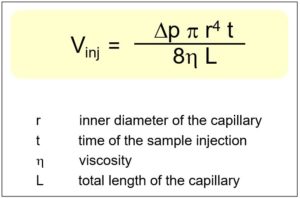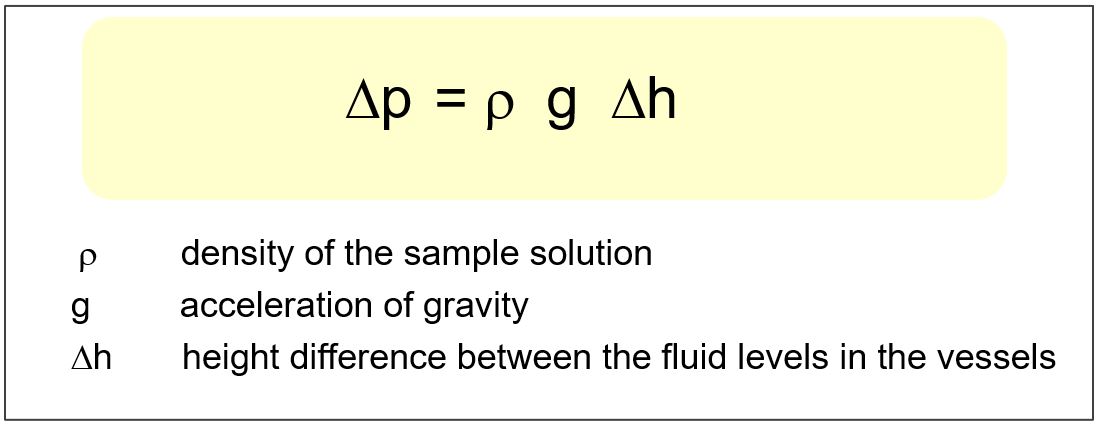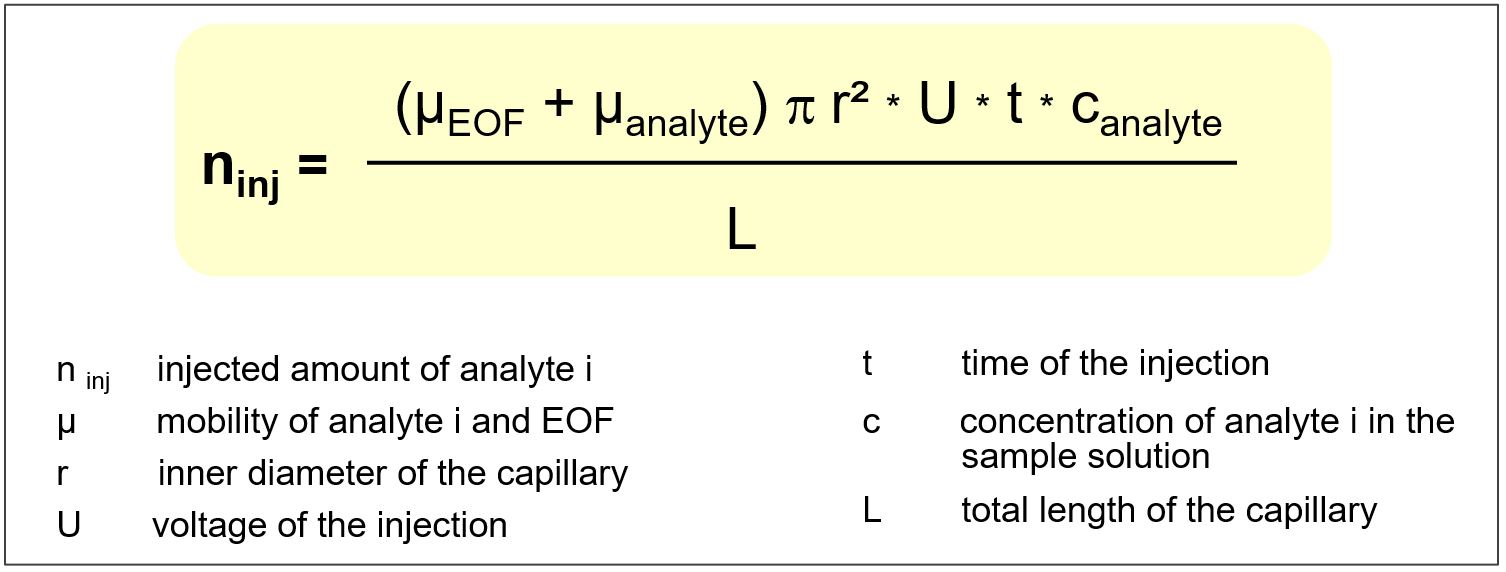1. Pressure Injection
Hydrostatic injection is the simplest and least expensive method of sample application in the CE. By raising the sample vessel relative to the expansion vessel by the height h during the time t, a hydrostatic pressure is generated in the capillary, which transfers a certain volume Vp of the sample into the capillary. Alternatively, the expansion tank can be lowered. With the relationship,
it is possible to calculate the pressure difference p by the increase. However, density differences between sample and electrolyte will not be considered. The sample volume Vp entering the capillary can be calculated using the following equation:

With a time of one minute and a typical task height of 10 cm, 9 nl of sample volume are injected into a capillary (L = 1 m) with an internal diameter of 50 μm.
The hydrodynamic injection
One type of injection which is of particular importance for commercially available automatic devices is the hydrodynamic injection. Here, a certain volume is injected into the capillary either by negative pressure on the detector side or by overpressure on the sample application side. The calculation of the sample application volume is analogous to the equation for the hydrostatic injection. Through the option of applying a higher pressure, larger volumes can be involved in the same time period, which is especially important for enrichment processes, such as for performing a Sample-Stacking.
2. The electrokinetic injection
The electrokinetic injection, just like the hydrostatic injection, is a method of sample application that can be realized without involving equipment. Before the start of the separation, a certain number of ions are transported out of the sample vessel into the capillary by the brief application of a voltage, which is usually far below the separation voltage. However, with appropriate polarization of the electric field and direction of electroosmotic flow, the mobility of the analytes is effectively reduced and fewer ions enter the capillary:
Depending on the mobility of the analyte ions, however, fast ions are more likely to be transported into the capillary during this enrichment. A second disadvantage of this method is the influence on the velocity of the ions by the conductivity and the chemical composition of the sample. The equation applies only if the conductivity of sample and electrolyte are the same. A reproducible sample injection can therefore only be achieved with exactly the same sample matrix. In practice, however, this can hardly be guaranteed. Therefore, a complex calculation and standardization is necessary for the quantitative detection of electrokinetic injection.
Source: Dissertation, Dr. Antje Mainka, TU Darmstadt 1998

